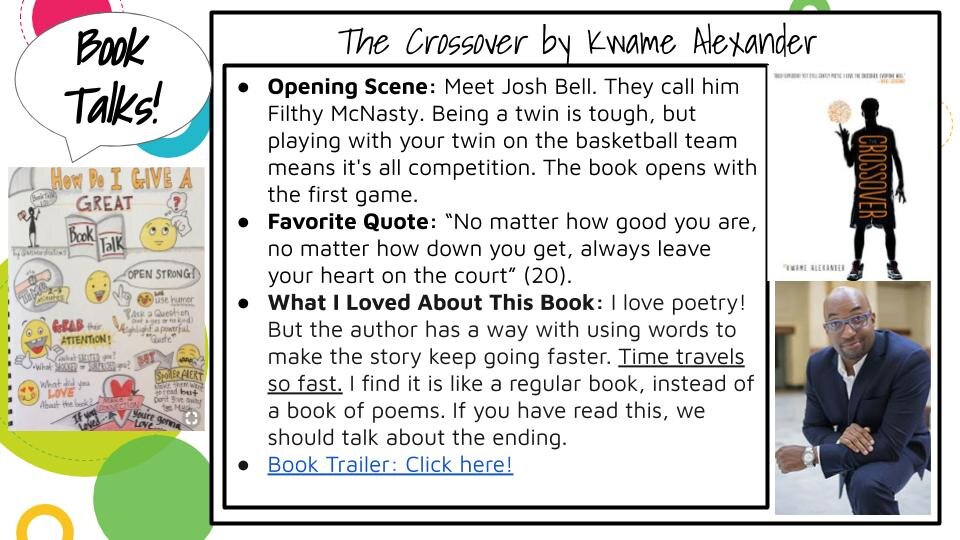Using Mentor Texts to Teach Helping and Linking Verbs
In the Classroom, I Am Teaching and Learning
STEP 1: BOOK TALK (5 MINUTES WHOLE GROUP)
The Crossover by Kwame Alexander might be one of my all-time favorite mentor texts. It could be because kids love the novel-in-verse format of this book, or the basketball theme, or the fact that they want to know what happens each quarter. This is an easy book to book talk because it just grabs kids. I love using this book to show helping and linking verbs in the present tense. This continues from the work the previous week where students identified action verbs and verbs of being. This lesson speaks to the easy conversational tone that we all have with each other on a daily basis. Kwame Alexander sounds like me. He sounds like you. This directly links to the ability to make grammar accessible because it is something we already know, we just have to know what to call the writer move when we make it.
STEP 2: NOTICE AND NAME THE AUTHOR’S MOVE(S) (10 MINUTES WHOLE GROUP)
Last week, the acting got really fired up. Kids are starting to open up and a classroom rapport is building where they trust each other enough to make mistakes and be silly. This will continue with the helping verb and linking verb lesson. I want to make sure I point out other examples and read those poems out loud. For this text, in particular, other great mentor pages are:
Page 3
Page 10
Page 30-31
Page 59
Page 221
I could print off these poems and have small groups analyze the verbs for practice, or I can read these out loud in class to support the book talk further. Kids love listening to the rhythm of the poetry out loud. I have embedded the handouts I use below or you can go to the Writer Resources page to get access to my Google Doc.
STEP 3: WRITE LIKE AN AUTHOR! (5-10 MINUTES INDIVIDUAL/PARTNERS)
I love the addition of the introductory prepositional phrase because kids don’t know they are secretly learning other new writer’s move skills. This is sneaky teaching at its best. I like to use the sentence frame to set them up for success. We choose a location, look at a bank of verbs that end in -ING, act out some examples whole group, and then write our own sentences down. I like the addition to writing space at the bottom of the handout because we are saving sticky notes. I gave them room to write the verbs of choice, and then I give them space to write their actual sentences. The word bank takes the risk away from making the writer move. They often ask to sub in other verbs of choice as they get more comfortable with the particular writing move as they go.
Some of the most powerful reinforcement of skills comes in the sharing part of class. Students get to double-check their sentences with each other, and then we share whole group.







